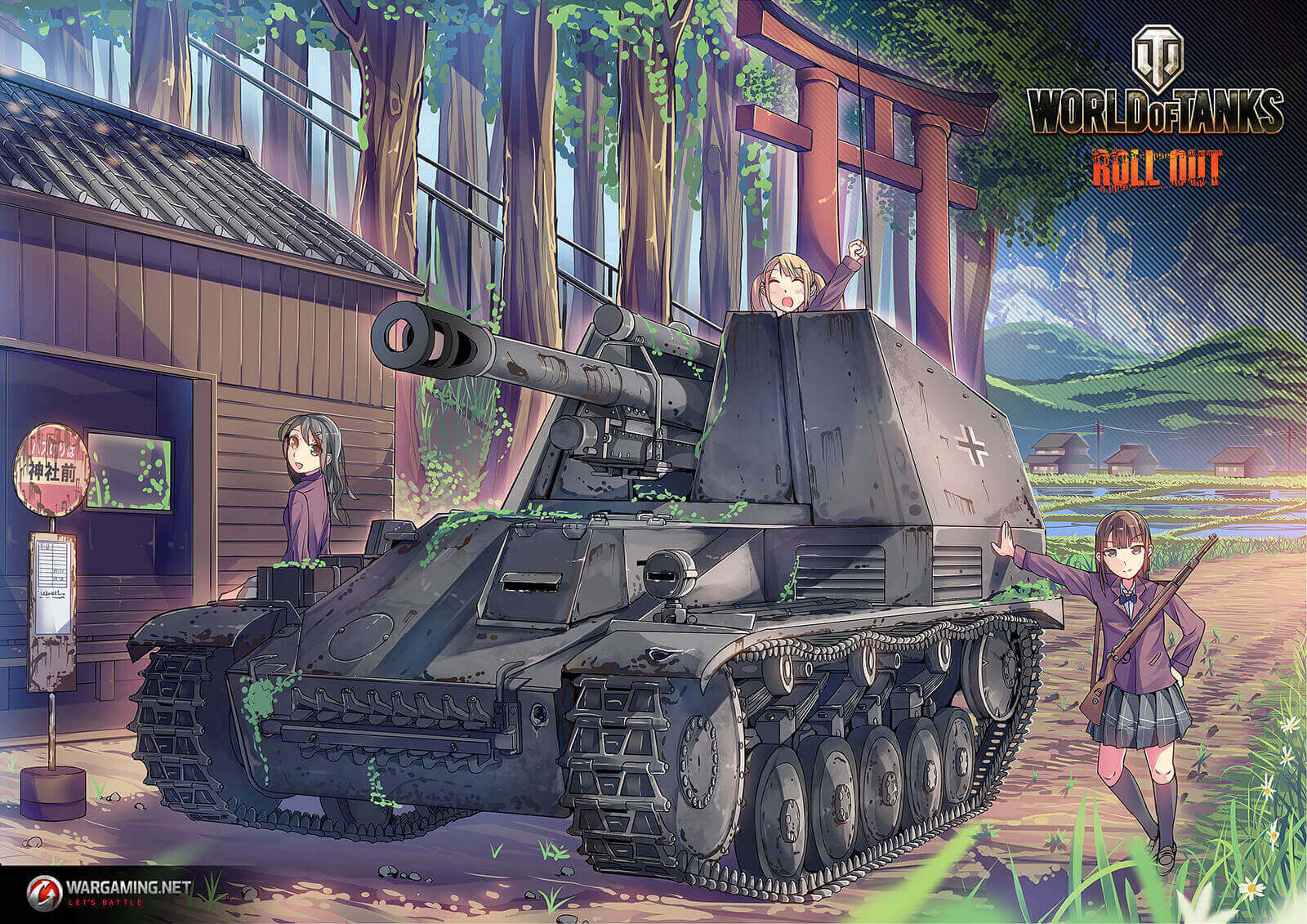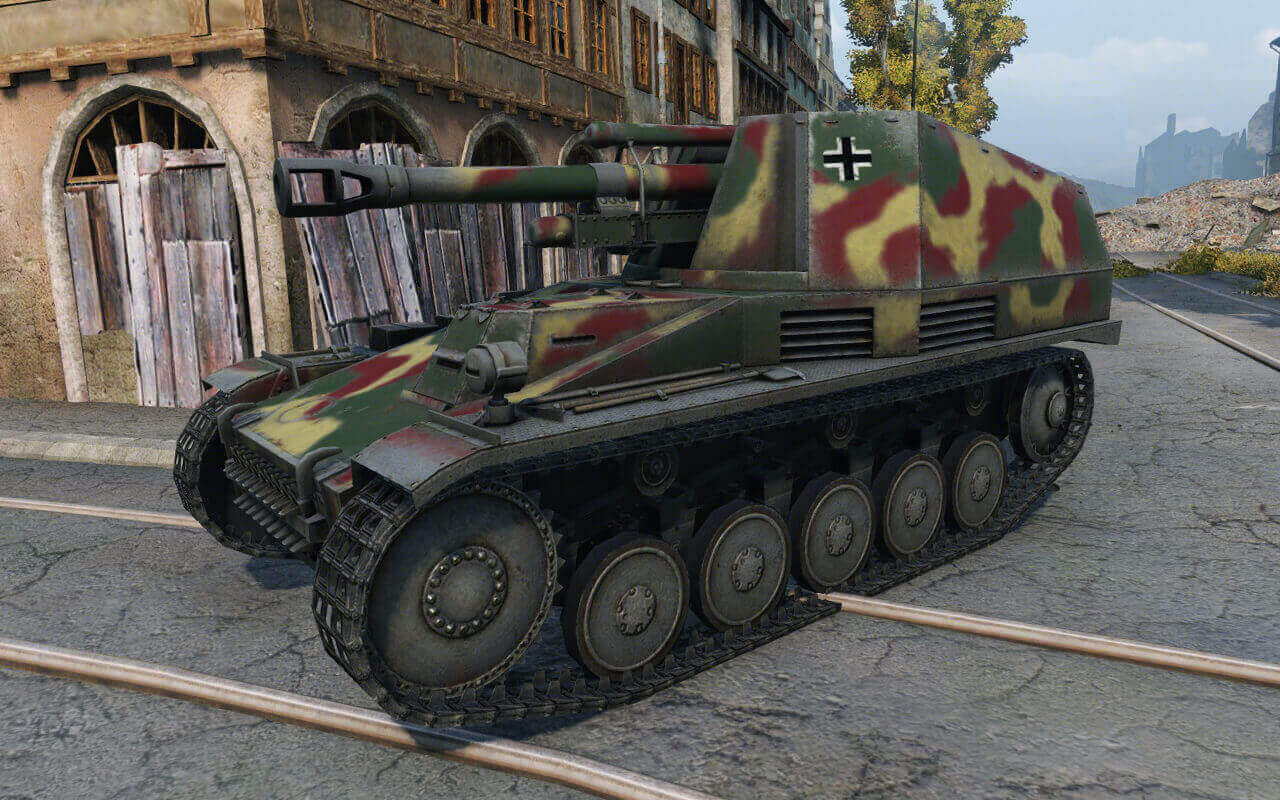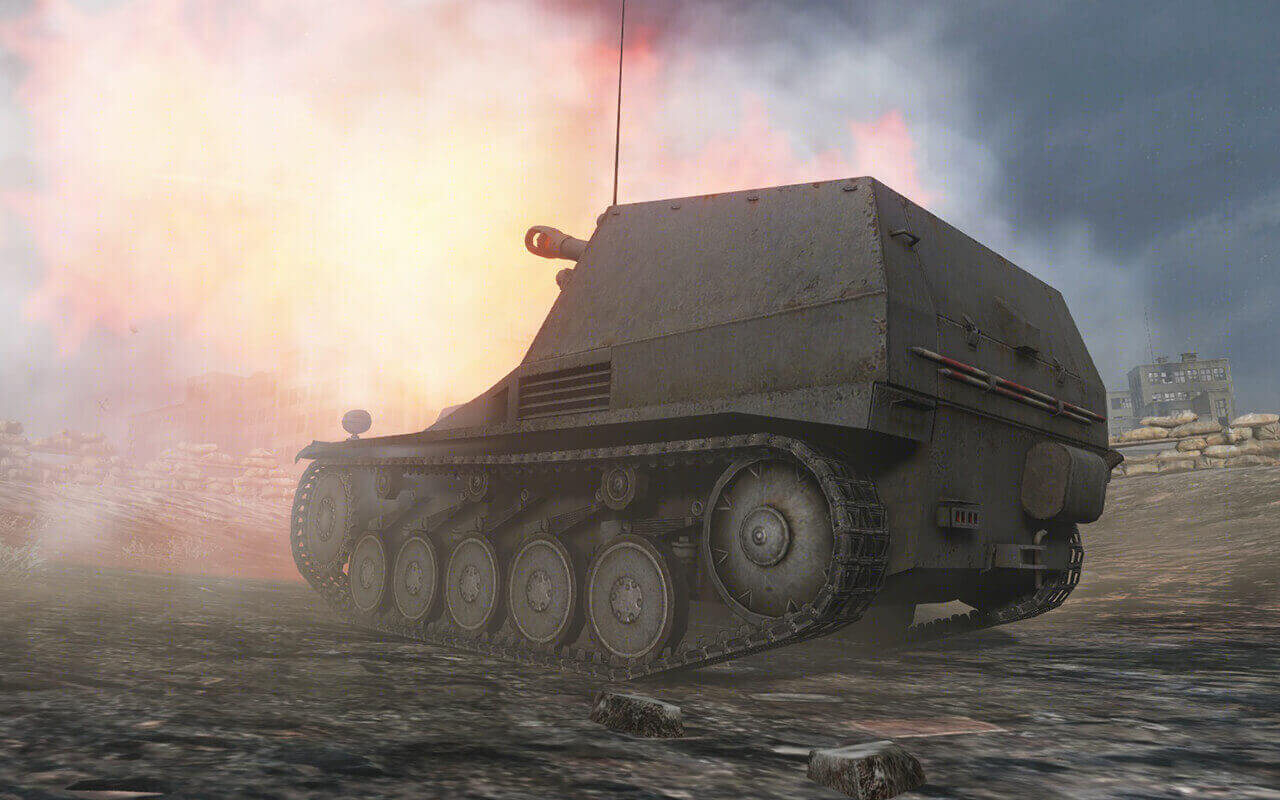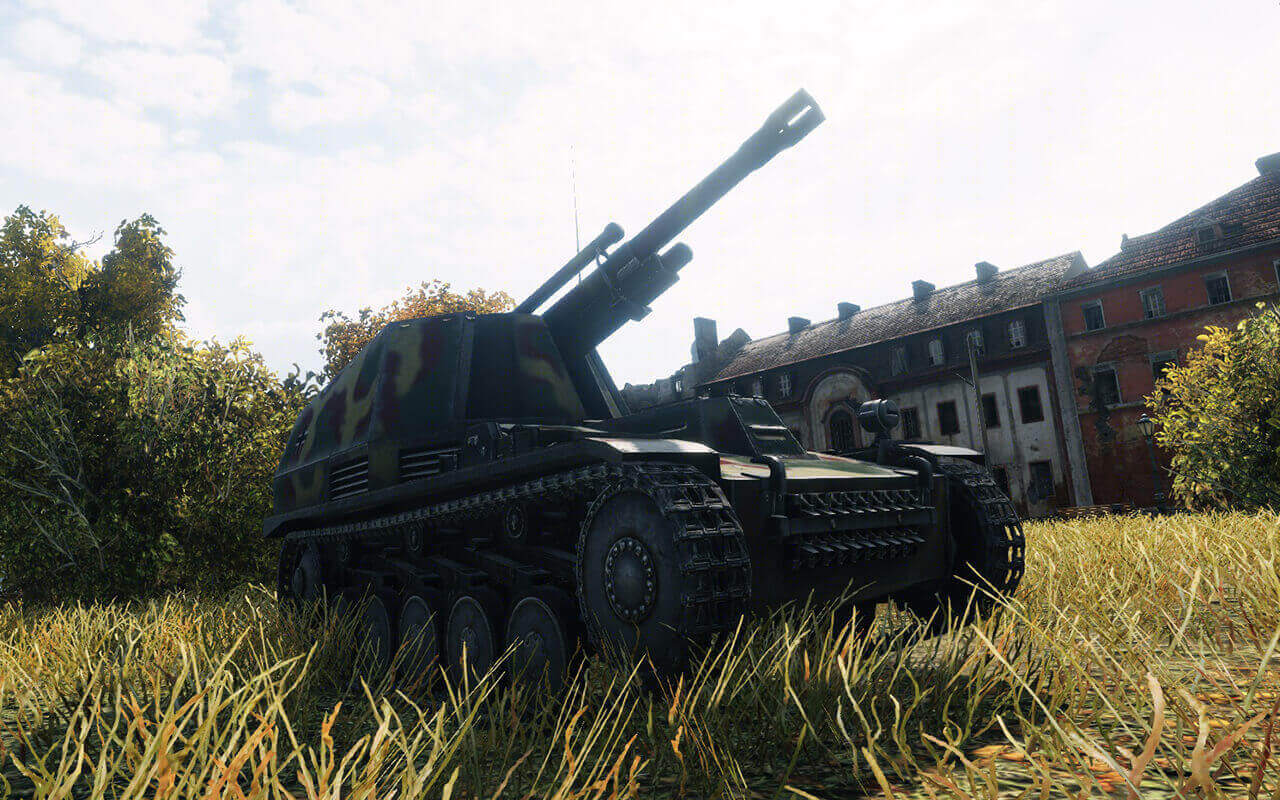Tank Illustrations "Artist's Choice" Part 4: Wespe / daito

The fourth illustration in this second tank illustration column project, "Artist's Choice" has arrived! In this tank illustration column, the artist presents us his or her favourite tank with an illustration and short commentary.
datito, an illustrator known for colorful scenery brings us the German Tier III SPG Wespe blending into a rural Japanese bus stop.
Take a look at the strangely nostalgic scene of a tank in the countryside!
Wespe
Artist's Comments
Hi, I’m called daito, and I had the pleasure of drawing the “Wespe” for this tank illustration column!
I usually draw small arms and military outfits with girls, so it was the first time I drew a self-propelled gun. But it was a nice challenge and very fun to draw!
It’s a German vehicle, but I decided to put it in a nostalgic Japanese setting by putting it at a bus stop in rural Japan with some school girls. Why? Well, there isn’t any profound meaning to it, but I guess a bit of an influence from that certain anime... set in a certain rural port town called Ōarai.
I chose the Wespe, because I used to use it in a long-running wargame series. It was very useful in larger desert maps, and above all, it’s so cute, isn’t it!? (I actually haven’t really played World of Tanks yet. I think I’ll use this opportunity to start playing!)
About the Artist - daito
daito is a military illustrator that mainly publishes works online SNS as well as at major comic conventions. He recently drew several images for an illustrated guide of special forces.
About the Vehicle
Place a conventional horse or vehicle towed artillery piece on top of tracks (or wheels) and you get a self-propelled gun (SPG). If it is a howitzer mounted on the vehicle, it’s a self-propelled howitzer, and if it is an anti-tank gun, it’s an anti-tank self-propelled gun.
The German Army, which began placed an emphasis on tanks from very early on, started the development of self-propelled guns early on as well. Due to the lack of funds, however, there were only blueprints produced, and the full-scale development only began after th War started in 1942. And it was Hitler himself that pushed the development of self-propelled guns. The only two types of self-propelled guns produced by Germany at this time were this Wespe and the Hummel with the 15 cm sFH 18 heavy field howitzer gun.
German Army Ordnance Department, which started the development of a vehicle with fully-traversing removable turret codenamed “Heuschrecke.” The basic specifications for this vehicle was created, but to meet the required specifications, a new hull had to be designed from scratch. There was no time to commit to such project as there were immediate need for tanks in the Russian Front, and so the Ordnance Department decided to have a project to create a self-propelled gun on an existing chassis at the same time, and this became the Wespe and the Hummel.
The gun on the Wespe was a Rheinmetall 10.5 cm le.F.H. 18 (10.5 cm light howitzer) and the hull was based off of the Pz.Kpfw. II Ausf. F. In order to create sufficient room for the fighting compartment the hull was extended. The armour layoput and the engine positioning was different too, so it was more of a chassis that used the same components such as the sprockets, idlers and track blocks from the Pz.Kpfw. II, but it was not an exact copy of the hull.
The armour surrounding the fighting compartment only has 8 - 12 mm of armour, so it can only protect the crew from small arms and schrapnel. A distinct feature on the exterior of this vehicle is the semi-circular splash guard under the mantlet, and right in front of it is the travel clamp. The heavy gun can damage components if not properly locked before moving, so the traveling clamp was used and great care was taken to harmful vibrations, but even then delicate parts such as the sights would break on a long march.
The Wespe is a well-known German self-propelled gun, yet there are a lot of basic things about the vehicle that remain unclear because of the lack of documentation. For example, it is quite certain that 835 vehicles including ammunition resupply vehicle variant, but the exact timing of the prototype production, which happened somewhere in October 1942, is unclear.
This is the same with the ammunition. It used a two-part separate charge and shell ammunition, and a vehicle can stow 32 rounds. 7 rounds vertically on each side of the fighting compartment, 4 rounds on the fender on each side. So, we know where 22 of the rounds are, but it is unclear if the rest were placed under the floor of the fighting compartment or if they were split up elsewhere.
Also, the name Wespe only appears in very few of the official documents, and Hitler prohibited its use. Various different names were used on official documents, including “Leichte Feldhaubitze 18/2 auf Fahrgestell Panzerkampfwagen II.” which roughly translates to “Light field howitzer 18 on Panzer II chassis.” This was solved by the designation of Sd. Kfz. 124.
Commentary by: Tadamasa Miyanaga (Phalanx), Military Advisor of Wargaming ASIA
Check out Military Advisor Tadamasa Miyanaga / Phalanx's updates on Facebook!
Screenshots
 |
 |
 |